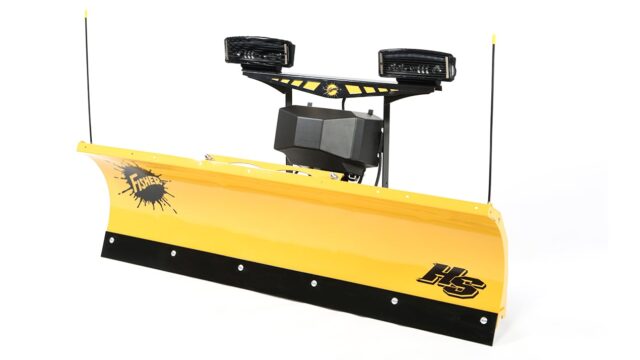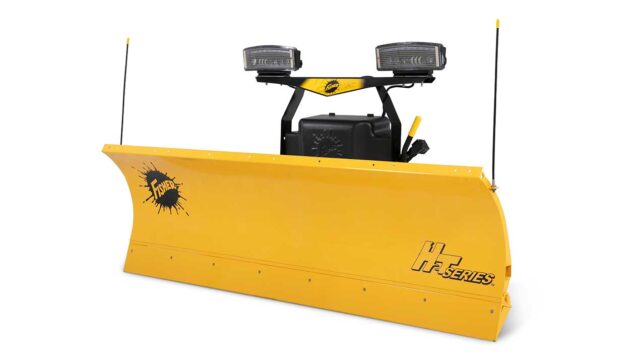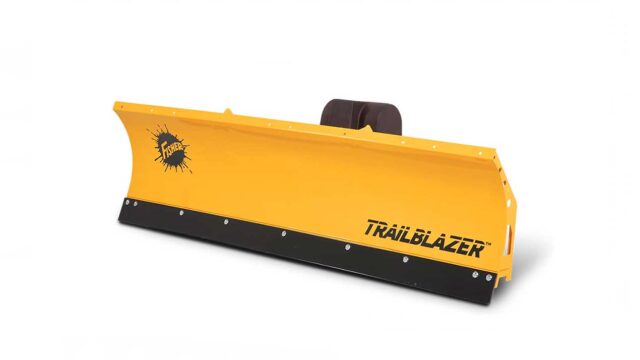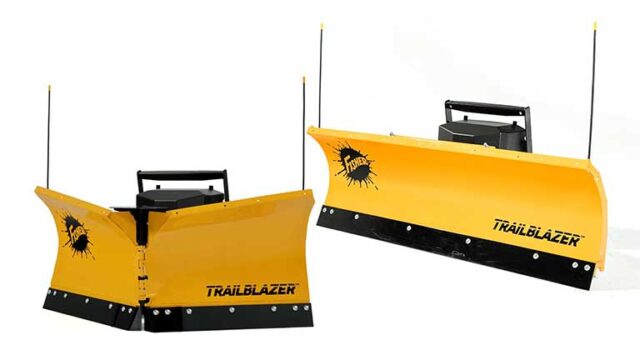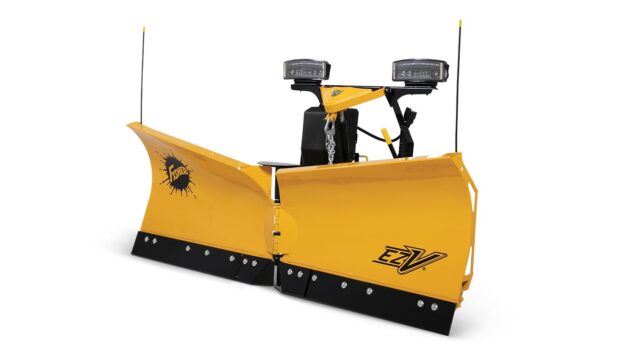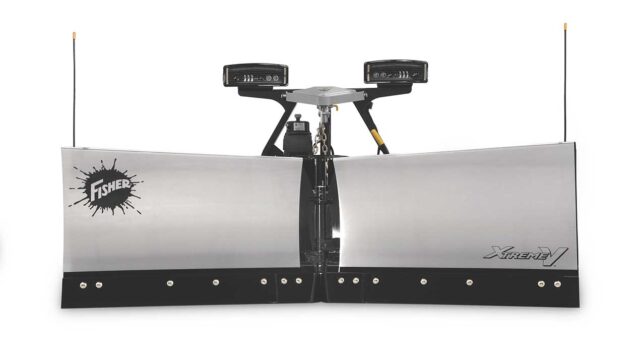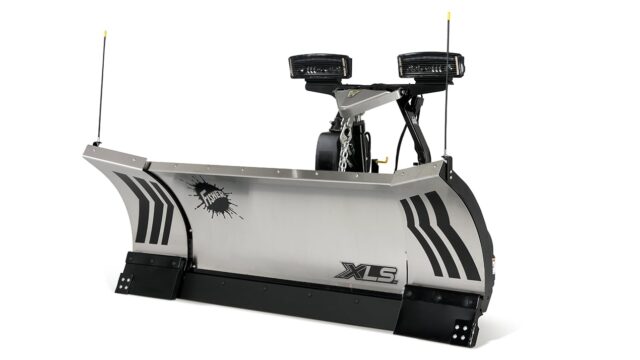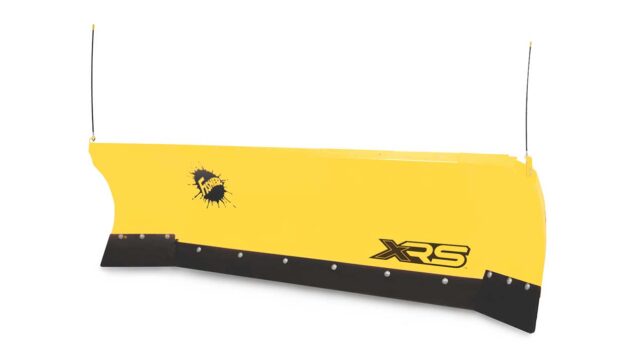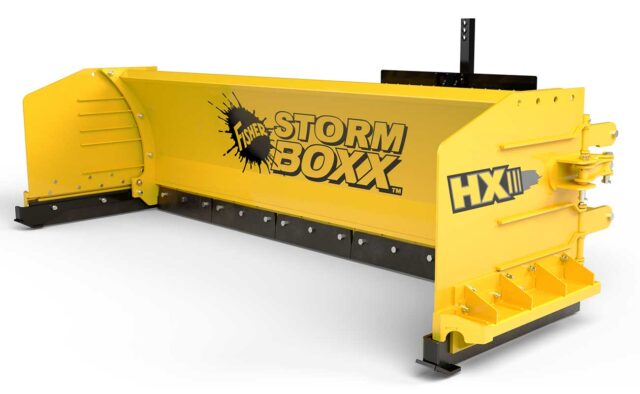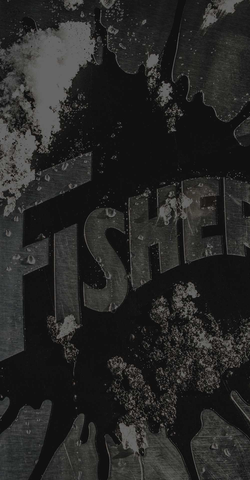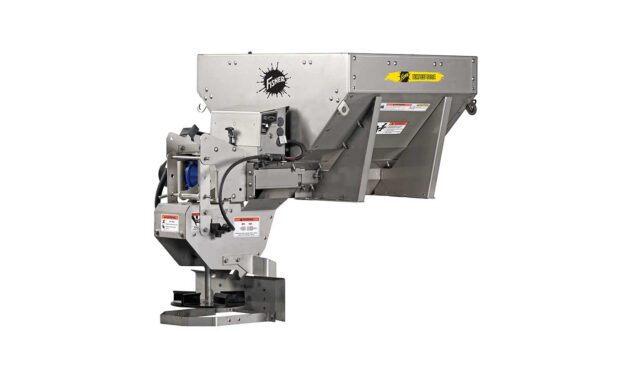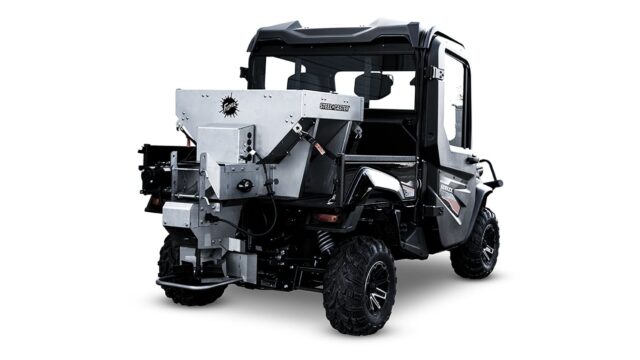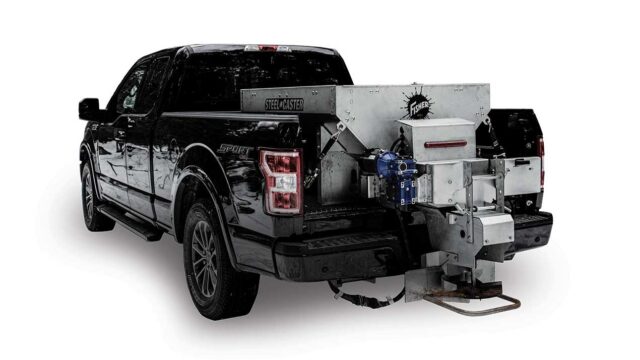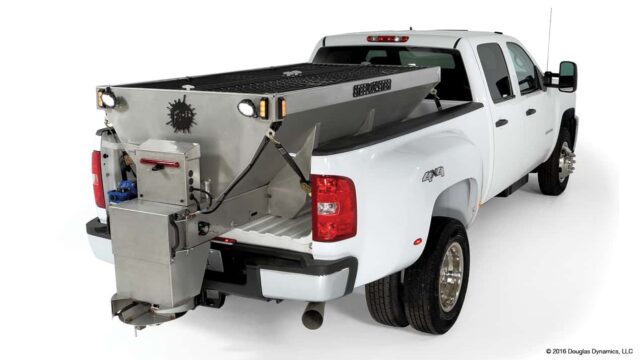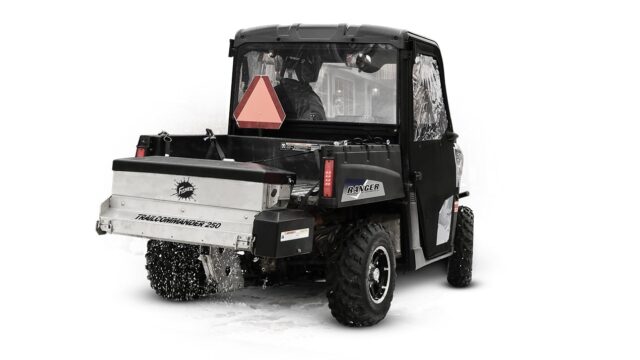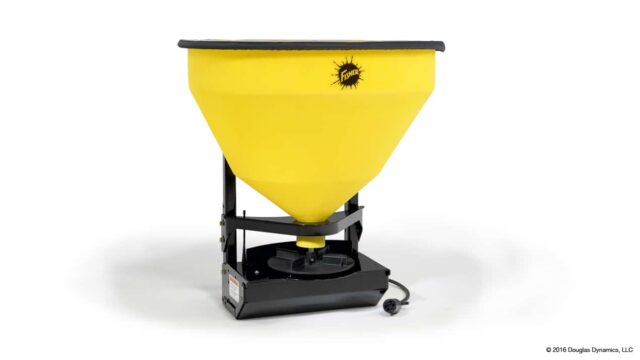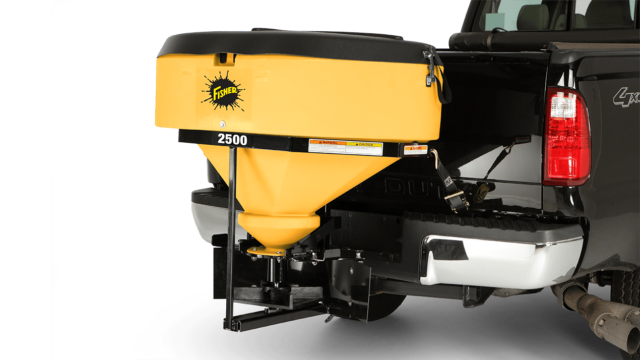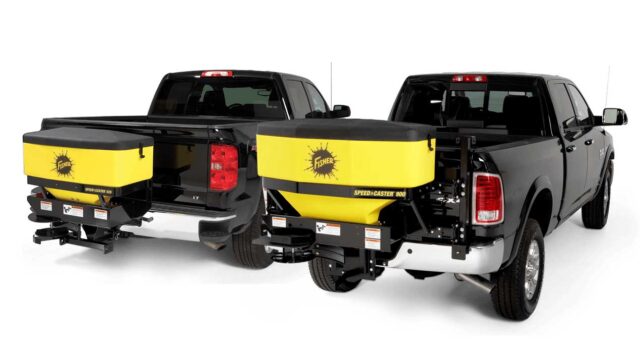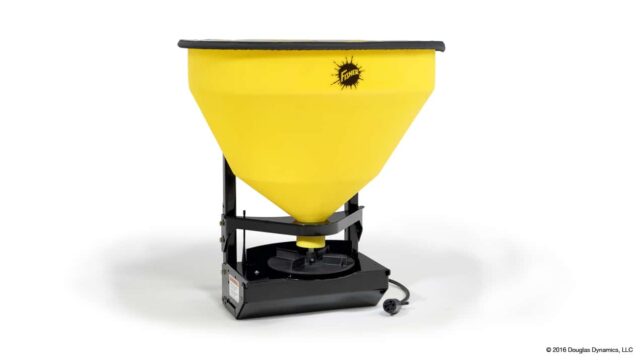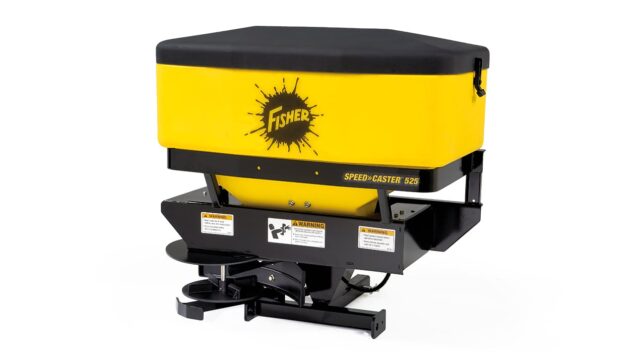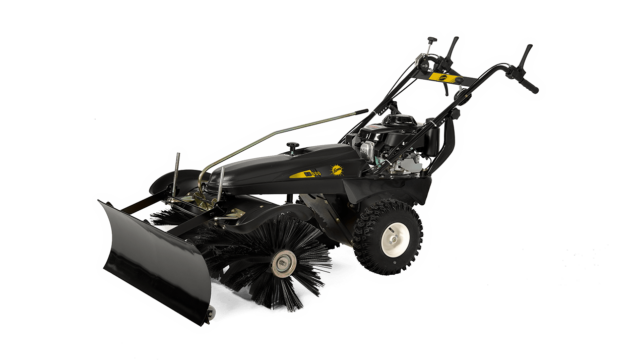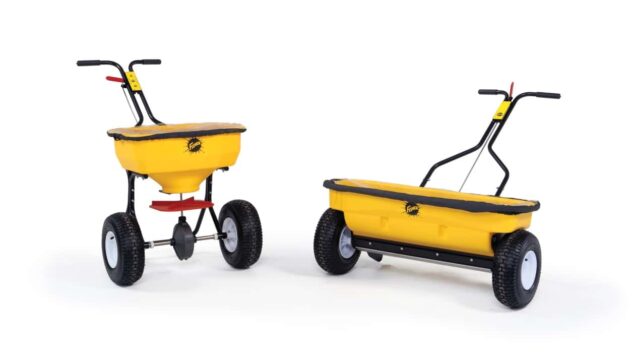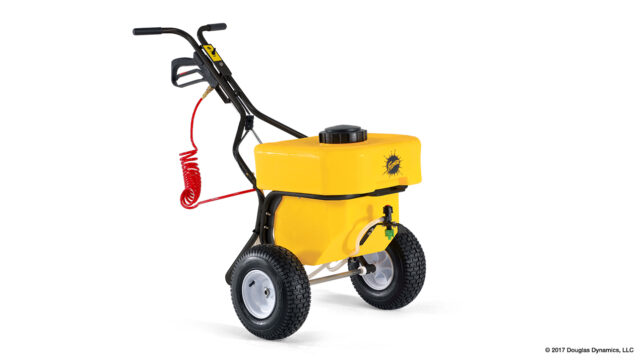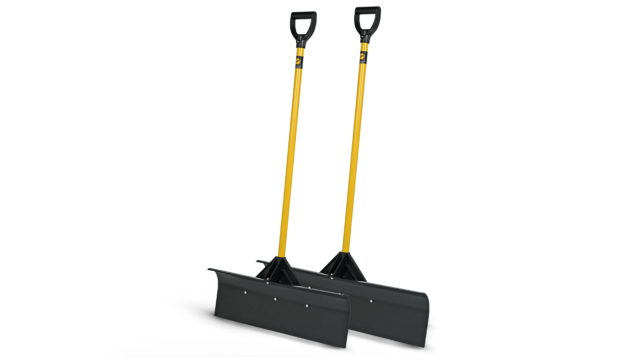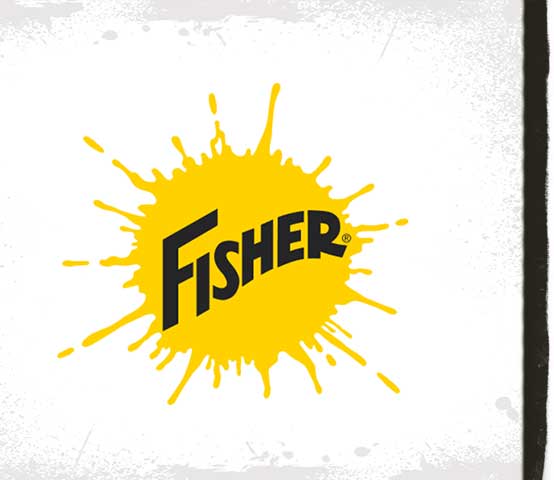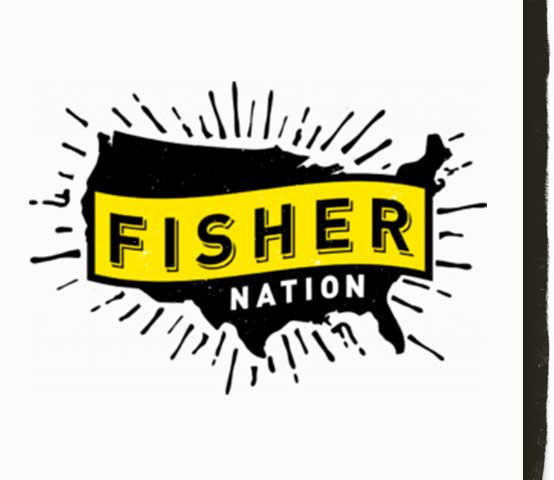Resource Articles Category: Consumer's Guide
What a Plow Transfer Takes & When to Buy New
Created August 30, 2022
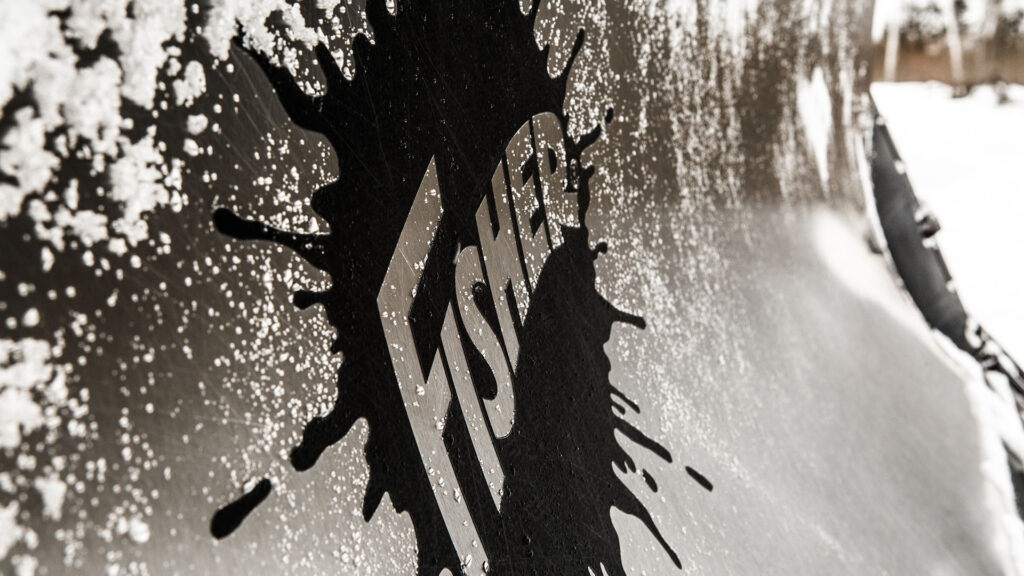
When it’s time to replace your snow plow vehicle, a big decision is whether to keep your existing plow and transfer it to a new vehicle or to buy a new plow. Ultimately, it comes down to usage. Consider the following aspects when contemplating a snowplow transfer.
New Plow vs. Plow Transfer: Which Is Best for You?
Contractors that plow-for-profit (especially for commercial applications) need equipment that is reliable and can stand up to winters worst. Older plows that are starting to show signs of wear and tear simply won’t perform as well. If you can afford it, buying a new plow or vehicle is generally the ideal choice because it is a business investment that requires less repairs and allows you to spend less time doing maintenance and more time making money. Plus, new equipment usually comes with a warranty.
If cost is a big factor or you just recently purchased new equipment in the last few years, it may make more sense to buy used or keep your existing plow and transfer it to a new vehicle. This is common for homeowners planning for moderate use, those not plowing for profit, or some light residential contractors.
Plan ahead and contact your local dealer in summer or early fall to schedule a new installation or plow transfer. Once winter comes, dealers are in high demand and parts may be difficult to find.
Verify the Plow & Vehicle Fit with eMatch
Whether you’re installing new plow or doing a plow transfer, the first step is determining plow and vehicle fit. The easiest way to do this is to visit FISHER® eMatch. Input your vehicle specifications and the system will determine which plows are applicable and note if any specific components need to be replaced or if modifications are needed for your setup.
NOTE: If your vehicle is not listed in eMatch, it does not have an approved snow plow application based upon Fisher Engineering’s guidelines in compliance with Federal Motor Vehicle Safety Standards (FMVSS). Due to certain weight constrictions, the approved plow applications will vary for each vehicle.
Before making a purchase, it’s helpful to know which plow model, electrical system, and mounting system you’re working with for a plow transfer. Most universal electrical components on the vehicle side can be transferred over as long as the installer determines they are in good working condition. The components that can vary from truck to truck are mount, headlamp harness, and isolation module (within the same electrical system).
Determining Plow Type & Information to Gather Before Starting
The first step in preparing for a plow transfer is determining the electrical and mounting for the truck and the plow. This video will cover a wide range of scenarios to assist with the most common plow transfer situations.
Plow Model
There are several different types of plows, some with different mounting and electrical systems. When planning to transfer or convert a plow, you’ll need to know the plow model and the current systems that the plow and truck have in place. The plow model can typically be determined by looking at the back of your blade. If you’re having trouble, contact your local dealer to help determine model.
Electrical System
To determine your plow’s electrical system, you’ll need to count the number of plugs, along with the number of pins within each plug to indicate if you have an isolation module or headlight relay system. These electrical plugs are located near the truck grille and plugs into the plow. Depending on the electrical system, there will be two or three plugs coming out of the grille.
If your system has two plugs, it is important to know whether it is an older two-plug relay systems with a battery connector or a multiplex two-plug system with one plug for the battery cable and one for the headlights.
Old two-plug relay systems have a battery connector with 2 large pins and the second connector for the plow lights contains either 9 or 12 pins. A FLEET FLEX electrical system has 2 plugs, one for the battery cable and one for the headlights. The battery cable plug has 4 pins (2 small and 2 large pins). The headlight plug will contain either 11-pins for halogen lights or 16 pins for LED lights with an isolation module under the hood to transfer lights from truck to plow.
- NOTE: Some newer trucks with newer-style headlamps will not be compatible with the older relay lighting and four-port module lighting system. In these cases, you’ll have to upgrade the plow’s lighting and electrical system to the three-port module before any plow transfer.
If your system already has three plugs, check whether you are using a three-port isolation module or a four-port isolation module. A three-port isolation module has three harness plug-ins, while the four-port isolation module has four harness plug-ins. Because these differ from each other, they use different headlamp harnesses that are not interchangeable between the two and could require a conversion kit and adapter.
- NOTE: Properly identifying the type of headlamps on your vehicle is essential to ensure the correct vehicle-specific plug-in harness and isolation module are installed. LED lighting has its advantages but making the switch usually means that you need to replace the headlamp harness and module. For help identifying headlamp type and how to find the correct parts for your vehicle-specific headlamps, check out this video.
Mounting System: Original Minute Mount vs. Minute Mount® 2
The mounting system can be determined by the style of headgear connecting pins. An original Minute Mount plow will have a pin on each side of the plow that need to be pulled individually before the release handle can be pulled to disconnect it. The new Minute Mount 2 plows will have one handle that you pull down to release both connecting pins simultaneously.
- NOTE: Older mounts are extremely common for plow transfers, given their simple and straightforward design. Keep in mind that 2007 and newer Chevy, GMC, and Toyota Tundra vehicles may not be compatible with the original Minute Mount due to incompatible headgear and bumper fittings.
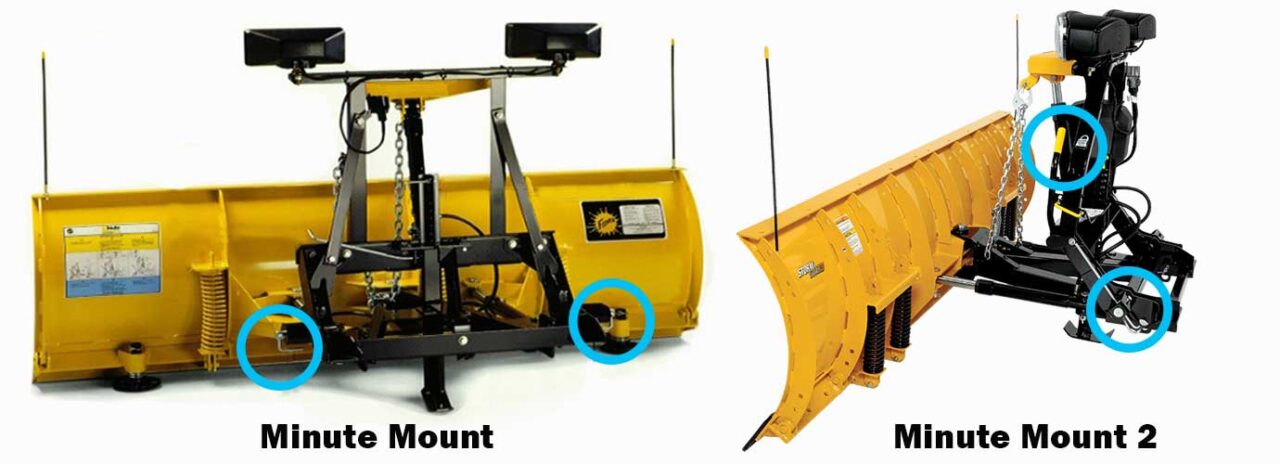
Importance of Installing a New Electrical Harness
If you already have a wired plow or truck with a three-plug system, you should be able to transfer the common, universal parts (plow, control harness, vehicle battery cable, and controller). However, pay close attention to what condition the cables and connectors are in before transferring. What is working now in your current setup may not hold up once it’s all taken apart and put back together. Older battery cables tend to crack and become brittle with time, and wires can short out after long periods of use.
That said, it’s highly recommended to go with a new electrical harness for plow transfers, given the larger issues—and costly downtime—a damaged pin, wire, or cable can cause.
FISHER® Dealers Ready to Assist
Pulling off a successful plow transfer is no easy task. However, you don’t have to go at it alone. Contact your local FISHER dealer to get started today.
8 Accessories You Need for Your Hopper Spreader This Season
Created March 4, 2022
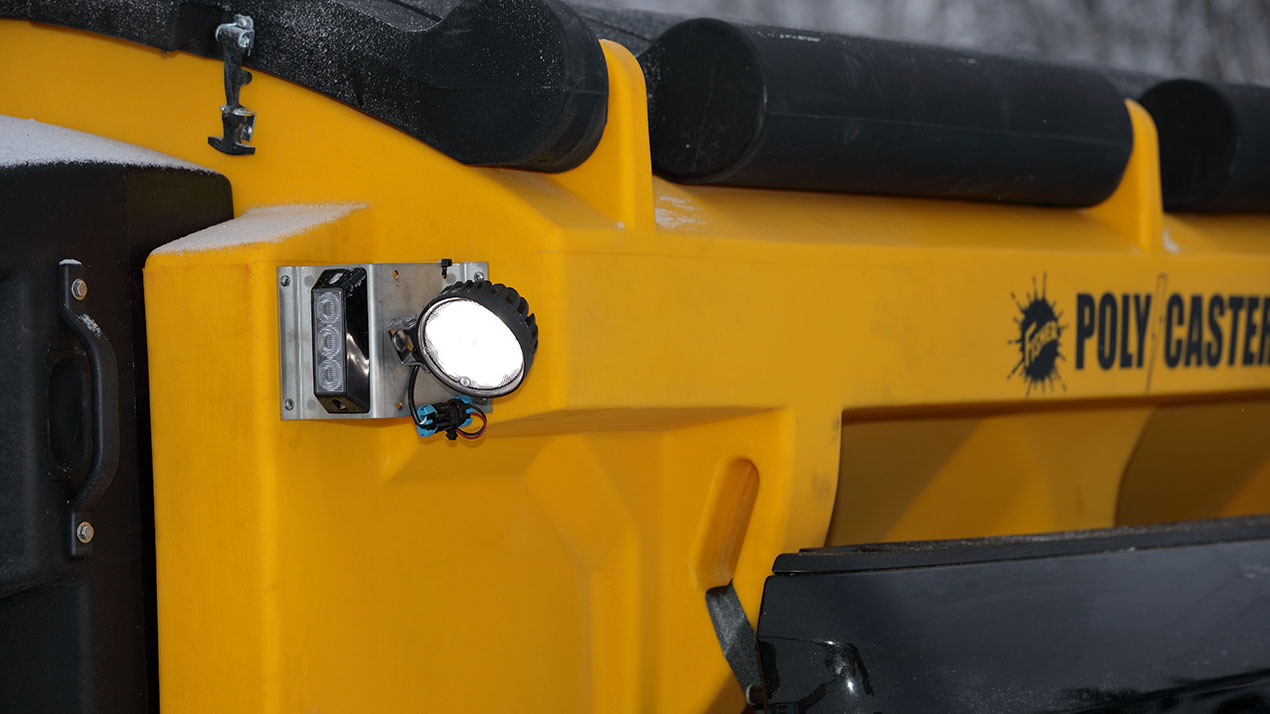
Whether you already have a FISHER® hopper spreader or are in the market for one, you’re likely looking for ways to make the most out of it this coming season. For most snow and ice professionals, it usually comes down to ensuring safety, saving time, and of course—making money. Take your operation to the next level by accessorizing your hopper spreader to help benefit your performance and make your business more profitable.
Safety First Accessories to Protect Your Ice Control Crew
Snow and ice professionals are out in the elements, experiencing hazardous conditions where safety is always a top concern. These accessories ensure that you and your crew are operating in the safest conditions possible.
- Strobe Lights:
Visibility is key, especially in the middle of the nastiest of weather conditions. With an LED strobe light kit, you’ll increase the visibility of your truck and make your presence known. By mounting them on the upper corners of your spreader, you’ll also show the profile of your truck so people can give you enough space. The FISHER LED strobe light kit works in temperatures as cold as -20°F so it can brave the cold just like you do.
(Available for all FISHER hopper spreaders)
- Work Lights:
While the strobe lights are for others to see you, an LED work light kit helps you to see what you’re doing in the rear of your spreader at night. If you’re checking on the spreader, adding material to the hopper, or if you’re parked and want to give more light to your shovel crew, this work light has an output of 1,000 lumens and can give you all the visibility you need.
(Available for all FISHER hopper spreaders)
- Ratchet Straps & Chains:
These ensure that your hopper is secure in the rear of your vehicle and stabilizes the load for vehicles with a short wheelbase. Our kit from FISHER features four high-strength woven straps that secure up to 4,000 pounds. You’ll want to be sure to bolt the hopper to the truck frame and use the straps to stabilize the load, providing optimal safety for you and the others on the road. For larger hoppers carrying the heaviest loads, chain kits are also available providing security and stability.
(Available for all FISHER hopper spreaders)
Save Time & Get Efficient With Spreader Accessories
In many situations, deicing is a race against time. You may only have a few hours to get out before the storm hits or before rush hour. Even one or two minor setbacks can throw off your schedule. These accessories will help streamline your ice control operation and help you get more done in less time.
- Spill Guards:
When it’s time to load up, you don’t want to waste material and have it spill all over the back of your vehicle. Spill guards make material loading quicker and easier, especially if you’re using a skid-steer and bucket to load a flatbed because they provide greater visibility to the dump zone.
(Available for the STEEL-CASTER™ 1.5-6.0 & STEEL-CASTER 0.7)
- Side Extensions & Extension Collars:
When you can load up more material each trip, that’s fewer fill-ups and more time out spreading material. That’s the premise behind adding side extensions to your spreader. This isn’t limited to a big hopper spreader; you can add side extensions to a drop spreader too. As always, be sure your vehicle can handle the extra weight.
(Available for the STEEL-CASTER™ 1.5-6.0 cu yd, STEEL-CASTER 0.7 cu yd & TRAILCOMMANDER™ 250 & 600)
- Central Point Grease Kit:
One of the best ways to save time is to keep up with your preventative maintenance. Our central point grease kit provides easy access to grease points, which simplifies the maintenance process and will save you time now, while also saving you from downtime later. Maintaining your grease points will also extend the life of the bearings in your spreader, saving you money.
(Available for all FISHER hopper spreaders—excluding STEEL-CASTER 0.35 cu yd)
- Tarp or Lid Kit:
Protect your material from the elements with a tarp or hopper lid. This can eliminate waste and reduce the chance of material bridging and clogging your spreader.
(Available for all FISHER hopper and tailgate spreaders, standard on some models.)
Accessories That Can Make You More Profitable
In the end, as a commercial contractor, the hard work of snow and ice control is about making money. While the previously mentioned accessories indirectly help with the bottom line, this last one can be a game changer. It hits the target for all three areas of concern: safety, time, and profitability.
- Pre-Wet System & Liquid Application Kits:
Adding a pre-wet system creates a ripple effect of benefits for your operation. First, it allows you to use less material by applying a liquid solution directly on the material activating it prior to it leaving the hopper. Activated material starts melting ice and snow immediately, improving results and even your reputation. Another benefit to pre-wet material is that it doesn’t bounce and scatter across the pavement, allowing you to be more precise with where you spread, saving material and money. Studies show that pre-wetting can reduce salt application rates by 20-30% to achieve the same results. That material savings goes straight to your bottom line.
(Available for all FISHER hopper spreaders—excluding STEEL-CASTER 0.35 cu yd)
Even though the winter months can feel long, they’re limited, and you only have a few months to really take advantage of the money-making opportunities. These accessories become valuable investments in your ice control operation that help you get ahead of the competition and deliver excellent results.
Interested in more ways to boost your salting game? Check out this additional resource.
The Inside Scoop on Snow Plow Cutting Edges From the Experts
Created November 16, 2021

A true snowplow professional is defined by quality and consistency. The results speak for themselves. And the place where the rubber (or other material) meets the road is the plow’s cutting edge. It needs to have the durability to withstand the elements, while also scraping down to the pavement without damaging the surface. There are a lot of things to consider when looking for the right cutting edge that will get you the best results.
Before you choose your cutting edge, you need to choose the right plow. Each FISHER® plow is meant for a specific level of performance and a specific application. They’re also made for specific kinds of vehicles, so you need to factor that in too. Make sure you have the right plow for the kind of work you’re doing, and then move on to the cutting edge.
How to Spot the Signs of a Worn Cutting Edge
You can’t get around the inevitable of replacing your cutting edge—but you can help improve its longevity. There are a lot of factors to consider that contribute to wear, including the contact pressure, climate, surface conditions, cutting edge material, and the speed at which you plow. In between plowing jobs, you should always be inspecting the plow to ensure it’s in good condition. If you see uneven wear, cracks, or other damage to the edge, it’s probably time to replace it.
Dialing in Your Snow Removal Productivity & Profitability
Performance and profitability are top priorities, and they don’t happen by accident. It takes strategy, observations, and adjustments over time to make sure you’re at peak efficiency. The reality is, you may need to try different cutting edges to see what works best for your customers and your operation. If your cutting edge is too hard (as seen with carbide/steel), it could damage the property. On the other hand, if it wears too quickly (as seen with rubber/poly), you’ll have far too much downtime and replacement costs tied up in switching out the cutting edge multiple times per season.
Don’t be afraid to try something new and see how it works. In the end, the more you try and monitor the results, the more likely it is that you’ll be able to dial in your performance.
Consider the Replacement Costs
As you’re optimizing your cutting edge replacement strategy, think about how you’re going to build those replacement costs into your property estimates. When you have determined the typical life of a cutting edge that works for you, spread that replacement cost out across the jobs that you typically do in that same time frame.
Rubber Cutting Edge
The best trait of the rubber cutting edge is how little—if any—damage it causes to the surface. Rather than scraping, it glides over the surface, but it can also leave some residual snow and ice. This can lead to safety issues that need to be seriously considered. In some applications, like parking garages or properties that feature decorative stone that can’t be damaged, rubber cutting edges are a necessity to protect the paved surfaces. In other situations, you might find that you need to replace the edge frequently, or that the edge may not deliver the clean finish you desire.
Poly Cutting Edge
There are pros and cons to all cutting edges, but poly edges tend to serve as a solid middle ground when it comes to durability. They’re softer than steel, but harder than rubber. It’s a nice compromise when you’re especially concerned with the surface you’re plowing. Although it might result in more frequent replacement, it can be worthwhile if you’re causing less damage to the pavement.
Steel Cutting Edge
These are the most common cutting edges used on FISHER plows. They resist bending, twisting, and uneven wear, and they provide a clean scrape and minimal property damage. They are also easily produced and readily available, so the replacement cost is often low. However, the downside is that you may need to replace the edge more often than a high-performance carbide edge, which means more downtime and more active inspection and monitoring.
You also have options when it comes to the thickness of the cutting edge. This is especially beneficial when you want the same performance but don’t want to replace the cutting edge as often. The increased contact area spreads the weight of the plow across a greater surface to slow the cutting edge wear. Sizes vary by model and availability, so make sure you do your homework before making your decision.
Carbide Cutting Edge
These cutting edges are the toughest in the business, made with tungsten and are specifically designed to resist wear. Because of that, you’ll want to use a carbide edge only on surfaces that are repaved often. Also, since most light duty applications don’t call for a carbide cutting edge, they’re only available on specific FISHER plow models. However, there’s no comparison when it comes to pure wear resistance.
When In Doubt, Talk to Your Dealer
As we previously recommended, it’s often best to try different cutting edges to see what works with your business operations. However, it’s always good to consult with your dealer to provide additional insight on what to choose.
In the end, it comes back to durability and performance, but always with a consideration of what’s going to make the customer happy. When they’re satisfied, they’ll keep coming back, and your reputation will be strengthened.
To get started with your research, visit the FISHER plows accessory page to see which cutting edges are available on each plow. Then, you’re well on the way to finding what works best for you, providing success this season and beyond.
You May Also Be Interested in These Articles:
- The Impact of OEM vs Will-Fit Snowplow Parts
- The “Before You Plow” Checklist
- Mid-Season Snow Plow Inspection & Maintenance Checklist
5 Points to Consider Before Adding a Box Plow to Your Winter Fleet
Created October 8, 2021
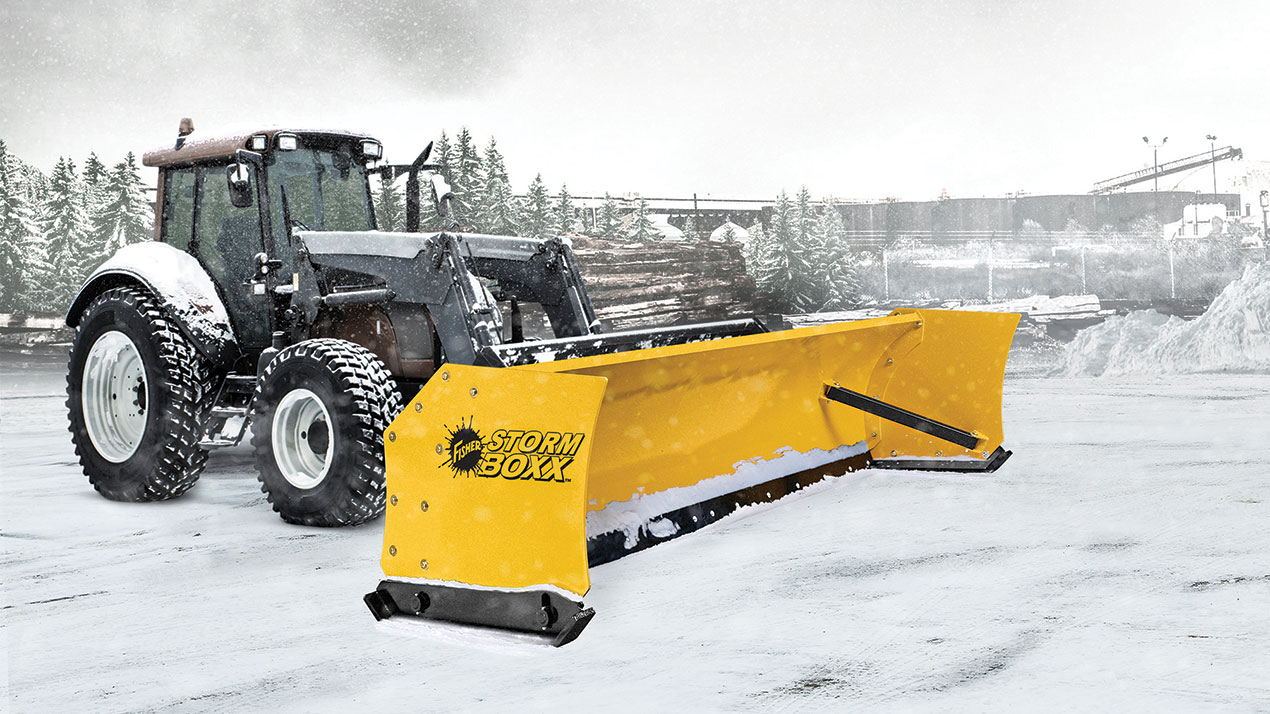
The most efficient and productive commercial snowplow around is the box plow (also known as a pusher plow or containment plow). If you’re trying to move a large amount of snow in record time, this equipment is made for the job. Ideal for airports, manufacturing facilities, large warehouses, big retail centers, and distribution facilities with large open lots and minimal obstacles.
When deciding if a pusher plow is the best candidate for your snow and ice control fleet, here’s a few things to consider:
#1) You May Already Have the Perfect Vehicle …or Can Lease It
Box plows are designed for use on skid-steers, wheel loaders, and tractors. Keep in mind that in most cases, the machine is left onsite because of inefficiencies with loading equipment and taking it from one site to the next.
- Owning: If you already have one of these heavy-duty machines due to landscaping or construction, adding a pusher plow attachment to increase winter business is a no brainer. Owning this equipment can be a smart business purchase if you can put it to use all year long and profit from it.
- Leasing/Renting: It’s no secret that loaders and tractors are expensive. Leasing and renting allow you to increase your equipment fleet without the long-term commitment of purchasing. This model also allows businesses to better manage cash flow and monthly payments.
Consider how many properties can utilize the machine to determine if leasing or owning is the smarter business decision. At some point, you may realize that having a mix is best—own enough machines to keep up with your loyal customer base and then lease equipment as you grow. The flexibility to add and remove capacity as needed throughout the seasons can be extremely helpful to your bottom line.
#2) Choose The Right Box Plow for the Job
If you’re looking to purchase a containment plow, not only do you have to consider the property type you’re plowing but also the vehicle being used. Not all box plows are created equal. You’ll want to choose one that’s designed for durability and overall scraping performance like the FISHER® STORM BOXX™ pusher plows with TRACE™ edge technology. They are made in a variety of sizes with interchangeable attachment plates to fit various machines and applications including skid-steers, wheel loaders, and tractors.
FISHER STORM BOXX Horsepower Compatibility
When finding the correct size box plow for your skid-steer, wheel loader, backhoe, or tractor, it’s a little different from finding the right fit for a truck. Instead of focusing on the weight compatibility between the truck and plow, it’s more about brute force and making sure the machine has enough horsepower to move the weight of the snow.
TIP: The weight of thick, wet snow is heavier than the light, fluffy kind. If you find yourself unable to move, back up and take a pass with less snow.
| 8’ | 10’ | 8′ (36″H) | 10′ (36″H) | 12’ | |
|---|---|---|---|---|---|
| Skid-Steer | 45+ hp | 60+ hp | — | — | — |
| Wheel Loader / Backhoe | — | — | 60+ hp | 60+ hp | 100+ hp |
| Tractor | — | — | 40+ hp | 50+ hp | — |
Chain Kits for Loader Buckets
For safety and stability, a chain kit (or sometimes known as a binder kit) is highly recommended when plowing with the bucket still attached to the loader. The chain kit secures each side of the plow to the bucket, so it moves in sync. This can keep the plow from torqueing off when encountering an obstacle or pushing snow into a pile and backing up.
#3) Have a Utility Infielder For Entryways & Tight Spaces
Pusher plows are massive and can be hard to maneuver in tight spaces. The best approach to remove snow from entryways or tight areas when using a containment plow is to also have an onsite assist with a truck plow and spreader. The truck comes through and back drags the snow away from doorways and hard to reach spots, taking care of the “cleanup” needed that a box plow can have difficulty performing. V-plows are commonly used for this because they are more diverse than a straight blade. Having a utility infielder is also great for de-icing services when you need to spread sand or salt.
#4) Containment Plows are Built to Last
A pusher plow doesn’t typically die of old age—but can be greatly worn down by misuse. When considering the cost of ownership, you may pay more up front than other plow types but it’s built to withstand harsh winters. They are designed to carry a large amount of snow and robust enough to hit ice piles when stacking.
#5) Learning the Technique
The learning curve is usually about getting used to the machine itself, not necessarily plowing. There are no stringent licensing requirement that drivers need to qualify for since these machines aren’t driven on roads. If you’re new to driving a skid-steer, wheel loader, or tractor, take the time to test drive the machine before you start plowing commercial properties with it—being comfortable takes practice.
Move more snow, more quickly with a box plow. Contact your local FISHER dealer for more information on STORM BOXX™ pricing and availability.
3 Aspects to Consider When Comparing the FISHER® SnoFoil® to Snowplow Deflectors
Created June 21, 2021
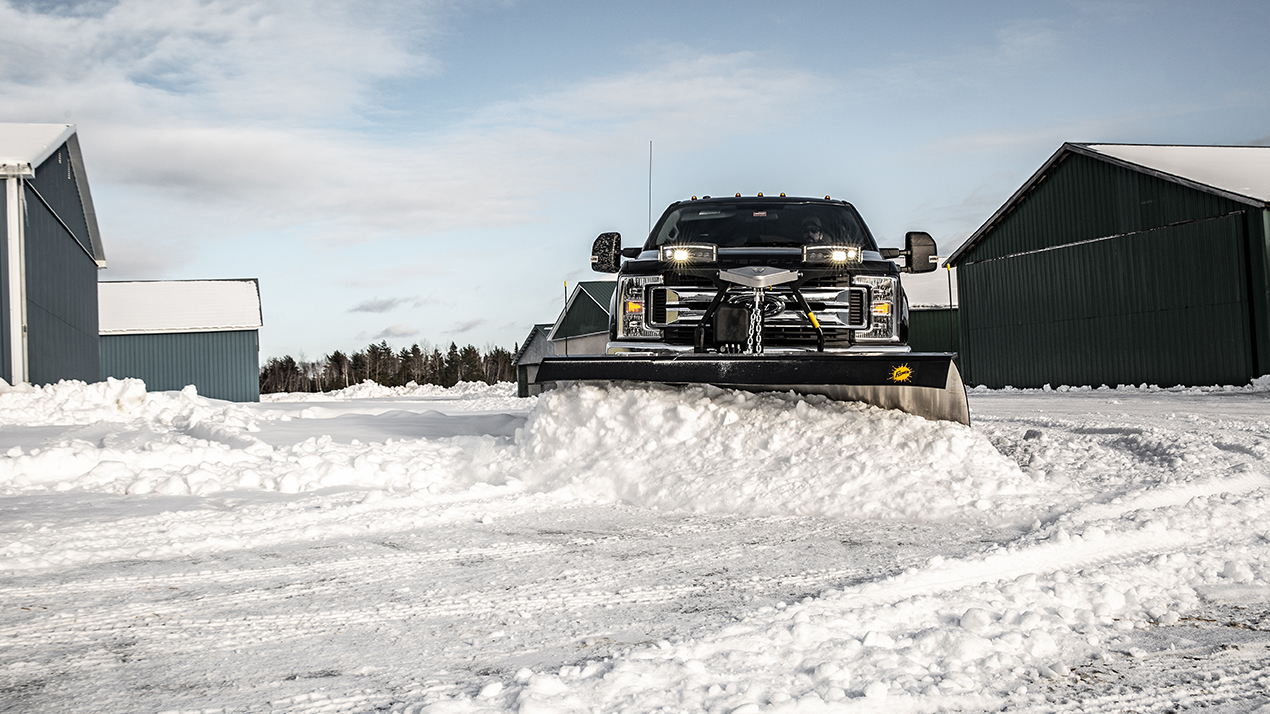
Accessories can make a great impact on plowing performance and efficiency, but how do you choose the right one for your snowplow setup? In order to make the best buying decision in regard to SnoFoils and deflectors, FISHER is laying out everything you need to know.
#1: Defining the Similarities & Differences
All SnoFoils and deflectors divert snow, throwing it to the side rather than blowing onto the vehicle’s windshield. This improves snow rolling performance, enhances visibility, and leaves a cleaner path. They are both extensions of a snowplow blade, but there are key differences in how they are designed.
- A SnoFoil attaches to the ribs on the back of the blade and follows the same curve, curling over the edge for better rolling performance. They come in genuine steel for rigid, sturdy applications and in poly for weight and cost savings.
- Steel deflectors increase the height of the blade and follow the blade curve but instead of curling over, they face straight out. Rubber deflectors usually hang over the plow blade as a flap since they are more flexible.
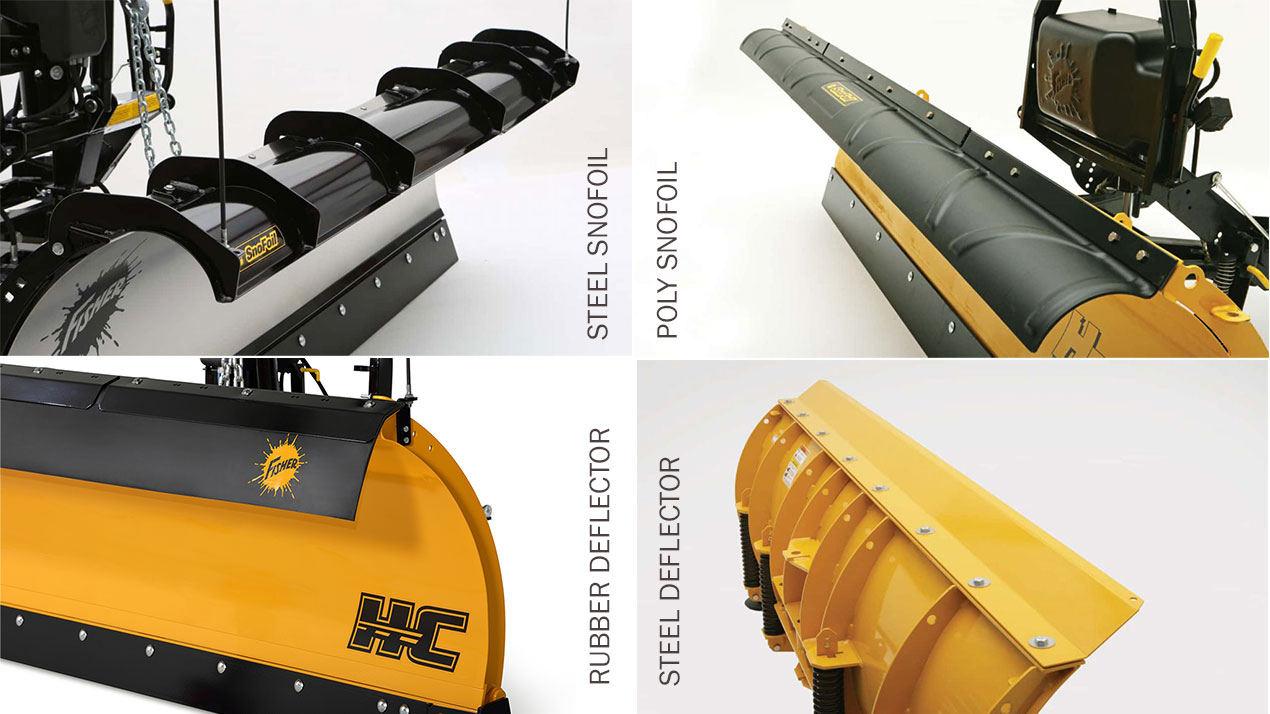
#2: SnoFoil & Deflector Compatibility
SnoFoils are designed for windrowing with a straight blade plow. Due to the construction and inability to flex in the middle or at the wings, SnoFoils aren’t intended for winged or v-plow use, which is where rubber deflectors really shine. They are extremely compatible with a variety of plow types and can flex.
There are four SnoFoil or deflector options that you can find among our FISHER® plows—after compatibility, the decision usually falls into price point and performance expectations.
- Rubber Deflector
The 10″ rubber deflector is the industry standard because it’s affordable and lightweight, making it the most popular and compatible option. It’s also very flexible, adding no additional stress to the plow. An 18″ option is available for wet, heavy snow conditions.
10″ Compatible Plow Models: HS, HDX™, HC, HT Series™, SD Series, HD2™, ExtremeV™, XV2, EZ-V®, XLS™, TRAILBLAZER™, XRS™
18″ Compatible Plow Models: HDX, HC, HD2, XV2
- Steel Deflector
Extend the height of your blade without affecting your ability to stack snow with a genuine FISHER steel deflector. Made of powder coated mild steel, this deflector is designed to be an extension for your blade to provide improved plowing efficiency.
Compatible Plow Models: HDX, SD Series, HD2
- Steel SnoFoil
A steel SnoFoil is a curved extension of your plow, allowing for the best snow rolling performance out of the four options but comes at a higher price point and is heavier than the others. It’s important to understand Gross Vehicle Weight Ratings (GVWR) and Gross Axle Weight Ratings (GAWR) to ensure weight limits are not exceeded and safety conditions are met.
Compatible Plow Models: HDX, HC, HD2
- Poly SnoFoil
The poly SnoFoil was designed for the weight sensitive HT Series snowplow. The half-ton application had very tight weight constraints during the initial design, making it heavy-duty in nature but lightweight in design. This left little wiggle room for the additional weight of a steel SnoFoil but a lightweight and moldable substitute like poly works perfectly.
Compatible Plow Models: HT Series
#3: Trip-Edge Impact on SnoFoils
Although it’s not necessarily a concern for a rubber deflector, the reason a SnoFoil works so well for FISHER plows is due to the unique trip-edge design. Only the base angle of the plow trips so it doesn’t slam forward and come in contact with the ground. Fixed on the front of the blade, the trip-edge can overcome obstacles and stack snow with ease—even with a SnoFoil. See the trip-edge in action!
For specific model compatibility or part number identification, visit the product details page or browse additional snowplow accessories that can improve performance.
Spreader Selection 101—Which Model Is Right For You?
Created May 20, 2020

When snow and ice contractors decide to purchase a new spreader, there are many aspects to consider. The most obvious being capacity, but the material you plan to use, spreader style and feed system should all be evaluated. Not all spreaders are created equal because not every job is the same. Here’s a guide to help you make an educated business investment and select the right spreader to meet your needs.
Spreaders Are Purpose-Built for Various Vehicle & Job Types
First, consider what type of vehicle you will be using (light-duty truck, heavy-duty truck, tractor, SUV or UTV) because that will narrow down your search results right away. Next, there are two popular styles of spreaders—an in-bed hopper spreader that is located inside the bed of the vehicle or a tailgate spreader that is attached to the vehicles hitch and hangs off the back.
When you’re salting large parking lots or roadways, an in-bed hopper spreader is the best choice because of the ability to carry more material, resulting in less reloading time. There is an added cost for equipment to load it but buying material in bulk can save a lot of money compared to bagged material. A tailgate spreader is the preferred choice for residential driveways or small parking lots. Since the truck bed is empty, you can load it with extra bagged material to refill on the go. The extra material can also help with ballast weight and improve traction.
If you have access to a UTV, adding a tailgate spreader can be a very efficient and quick solution to salting sidewalks or small driveways. It reduces the manual labor sidewalk crews endure and also helps to spread material more evenly across the pavement. Walk-behind spreaders are also a tried and true method for sidewalk services if a UTV isn’t available.
Size Matters When it Comes to Spreader Capacity
Getting the correct sized hopper for the job makes all the difference. An undersized spreader will result in more travel time to refill material and less time on the job. Not to mention the wear and tear on your vehicle and wasted fuel. If the spreader is too big, it could exceed your vehicle capacity when fully loaded.
When selecting the size of your hopper spreader, you’ll need to know your vehicle’s GVWR (Gross Vehicle Weight Rating) and RGAWR (Rear Gross Axle Weight Rating), as those values, along with the front and rear axle curb weights, will ultimately determine the size of spreader you can get for your truck. For safety reasons, you must choose a spreader that will not cause your completed vehicle including spreader, spreading material, occupants, and additional vehicle accessories to exceed your vehicle’s posted GVWR or RGAWR.
Feed System Compatibility Is Important for Performance
Most contractors prefer a specific delivery feed system—auger or pintle chain—based on the material they are planning to spread and the amount of maintenance they want to perform on it. A pintle chain conveyor can handle heavier, wet materials or sand and is ideal for high-speed applications like highways and city roads. Whereas an auger is best for free-flowing materials like bulk salt at a slow, smooth flow rate for driveways and parking lots. The auger also has independent controls for the drive and spinner motors, so you can increase or reduce the vehicle speed without affecting the spreading width. The precise material application capabilities cut down bulk material by at least 20%.
Spreaders Are Only As Good As the Material They’re Made From
There are two common types of materials for spreaders—polyethylene or stainless steel—both are corrosion resistant, which is especially important if you’re using salt. Stainless steel options are strong and durable but can be a bit heavier than poly. The lighter the spreader, the more opportunity to load greater amounts of de-icing material—up to 500 pounds in many cases—before exceeding the posted GVWR or RGAWR for a particular vehicle. Poly is also inherently smoother so the materials tend to slide easier inside the spreaders, doing a nice job of flowing material down to the pintle chain or auger.
Accessories Can Customize the Fit
Most spreaders are versatile and built for a variety of uses, but you may need additional accessories to achieve a desired performance. Two of the most widely used accessories are vibrators to reduce bridging and an inverted V to help keep weight off of the feed system. Some spreaders even have pre-wet capabilities that spray solid de-icers with a liquid brine solution as its being dispersed to the pavement to enable it to work faster at colder temperatures. This proactive method can reduce material costs by up to 40% because less salt is needed to get the job done.
If possible, it’s nice to have a variety of spreaders to apply to various jobs but if you’re trying to decide which spreader is best for your business, it’s safe to stick with something that is scalable, long-lasting and versatile since you can’t anticipate where your business will evolve. Find out which spreaders will best fit your fleet by using the spreader selector tool.
The Impact of OEM vs Will-Fit Snowplow Parts
Created February 10, 2020
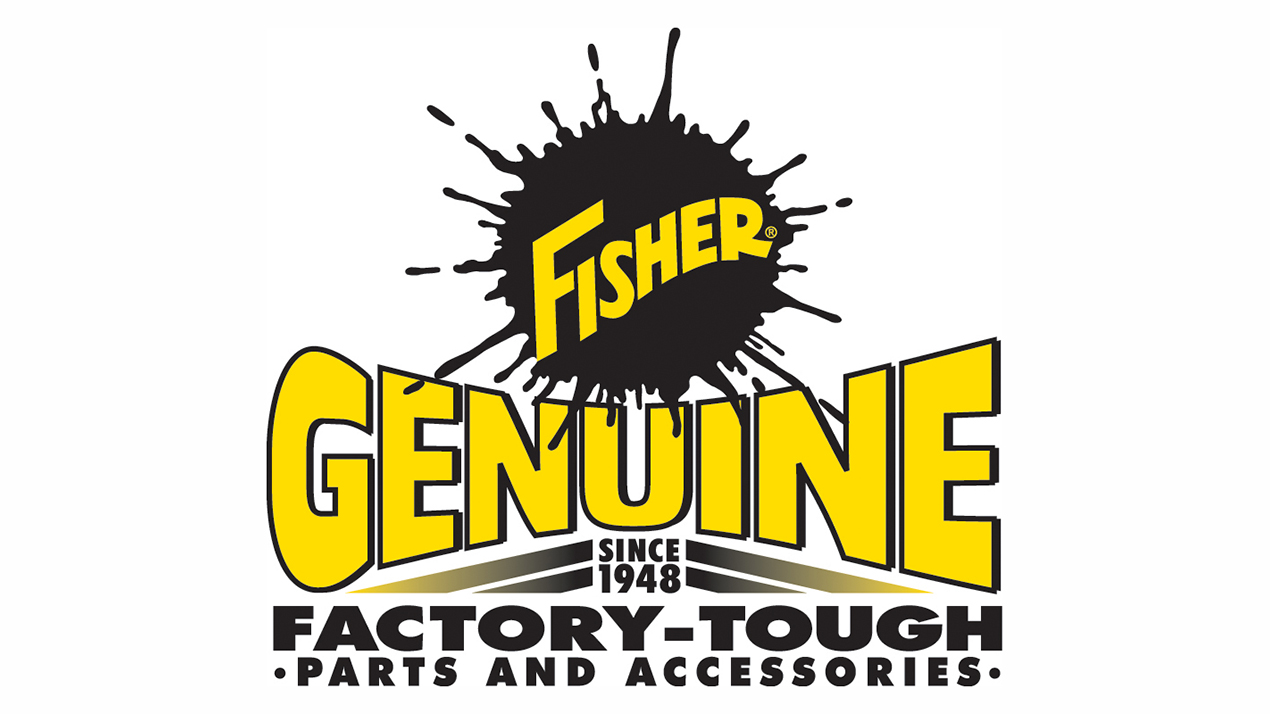
Cutting corners usually comes with a downfall, and it’s not so different when it comes to using will-fit snowplow parts. Going generic may save a little money but what is the long term cost to your business?
Aftermarket and OEM Parts Are Not Created Equal
Although they are similar, the quality and consistency of aftermarket parts can’t compare to those made by the original manufacturer. These trusted parts are specifically designed for the product in mind and are guaranteed to fit. Will-fit parts may not be designed to last as long and may cause issues down the road. The “hidden costs” are in the performance and life of the part.
Manufacturers Stand Behind Their Work
A huge benefit to purchasing an original part is that it’s covered under warranty. Any part not furnished by the OEM can cancel out a valid warranty on the product. FISHER® even offers a one-year warranty on all parts and accessories. Having an OEM warrantied part can also help the resale value when you’re in the market to sell your equipment because the potential buyer can have confidence in knowing the part is the right one for the product.
Genuine Parts Bring Genuine Value
OEM parts aren’t just created for the product—they are thoroughly tested for each application. Proper installation and safety aren’t a concern when using OEM parts because they are the exact same as the original parts included on your plow when it was brand new.
Additionally, if you’re proactive about maintenance and plan ahead to have common parts in stock, you can take advantage of off season sales and discounts.
Don’t Forget the Selection Process and Ongoing Support
Another added perk to purchasing OEM parts is that you have ongoing technical support to assist you. If you’re having a difficult time deciding which part is needed or have any issues down the road, it’s not a lost cause. A network of factory trained authorized dealers are only a phone call away.
The next time you’re faced with the decision of OEM vs will-fit parts, weigh the pros and cons to make an educated decision. Looking for a FISHER® part right now? Start by searching our parts lists.
To Buy or Not to Buy: The Advantages of Owning a Snowplow
Created October 17, 2017

If you live in the Snowbelt, you’ve got three options for clearing snow from your property:
- Hire a professional
- Buy a snow blower (or a shovel)
- Buy a snowplow that fits your vehicle
Let’s weigh the options.
Hiring a Professional Snowplow Driver
This is by far the easiest solution, but it does cost money. Depending on their schedule, you may not always be able to get it done as early as you’d like. Buying a snow blower or using a shovel will save money and allow you to clear snow on your own schedule, but it’s time-consuming and labor-intensive. It can also be physically stressful for people with back issues or health concerns.
Advantages of Purchasing Your Own Plow
So what about buying a plow? While it does require an initial investment, many personal snowplow owners find that a snowplow pays for itself over time compared to hiring a snow contractor. It also pays for itself in terms of convenience and ease of use.
Most importantly, it puts you in control. Owning a plow gives you the advantage of clearing your driveway whenever you want. YOU determine the frequency. YOU decide where to build the snow piles. And it gets done in a fraction of the time it would take with a snow blower, from the safety and comfort of your own warm vehicle.
So, if you have a pickup truck or SUV in a region with heavy seasonal snowfall, buying a plow might be the right call for you. With an array of different brands, models and sizes to choose from, plow manufacturers have a solution for most common vehicles.
Want to learn more about how you can benefit from owning your own plow? Consult a property maintenance professional, talk to a dealership, or check out more FISHER® resources.
Common Snow Plow Accessories & Benefits
Created August 18, 2016

Accessorizing your plow is one of the best, most affordable ways to increase efficiency and reduce damage (both to your plow and your client’s property). It’s not quite like getting a brand new plow, but it’s close.
Blade Wing Kit
Increase your plow’s carrying capacity by adding a pair of blade wings. They quickly bolt on to your plow, extending the plowing width between 12 and 21 inches. To capture more snow, blade wings extend forward at an angle between 35 and 60 degrees. It’s easy to understand why these add-on tools are so popular!
Curb Guard Kit
Curbs can come out of nowhere, and before you know it, you’ve damaged the outside edge of your plow. These guards fasten tightly to the blade and are made of abrasion-resistant material. Some guards feature design elements that protect the curb as well.
Deflectors
Snow flying over the top of your plow onto your windshield can reduce your visibility, especially with dry powdery snow and extra windy conditions so deflectors that fasten to the top of the blade are a wise investment. Available in rubber or steel, deflectors are easy to install and one of the fastest ways to increase visibility, which provides a safer and more enjoyable ride. They also give the plow a powerful, professional look.
SnoFoil® Deflectors
With its rigid design and more aggressive forward curve, SnoFoil® deflectors, available in poly or steel, increase the snow rolling capacity of your plow while keeping snow off your windshield.
Shoe Kit
Gravel roads, dirt roads or heavily faulted pavement can grab at your blade, leading to uneven wear. An easy-to-install shoe kit lets you easily raise the blade height to clear gravel and uneven surfaces with minimal plow damage, while extending the life of your cutting edge. When you are plowing a hard, flat surface like asphalt or concrete, just raise or remove the shoes so the cutting edge scrapes the pavement clean.
Blade Guide Kit
Even in ideal conditions, an experienced and skilled operator can have a hard time keeping track of the sides of the blade. Blade guides provide a visual reference, and mark the blade edges with a highly visible, reflective indicator. This makes it easier to line up the blade with curbs and steer it clear of obstructions.
Learn more about FISHER snowplow accessories.
